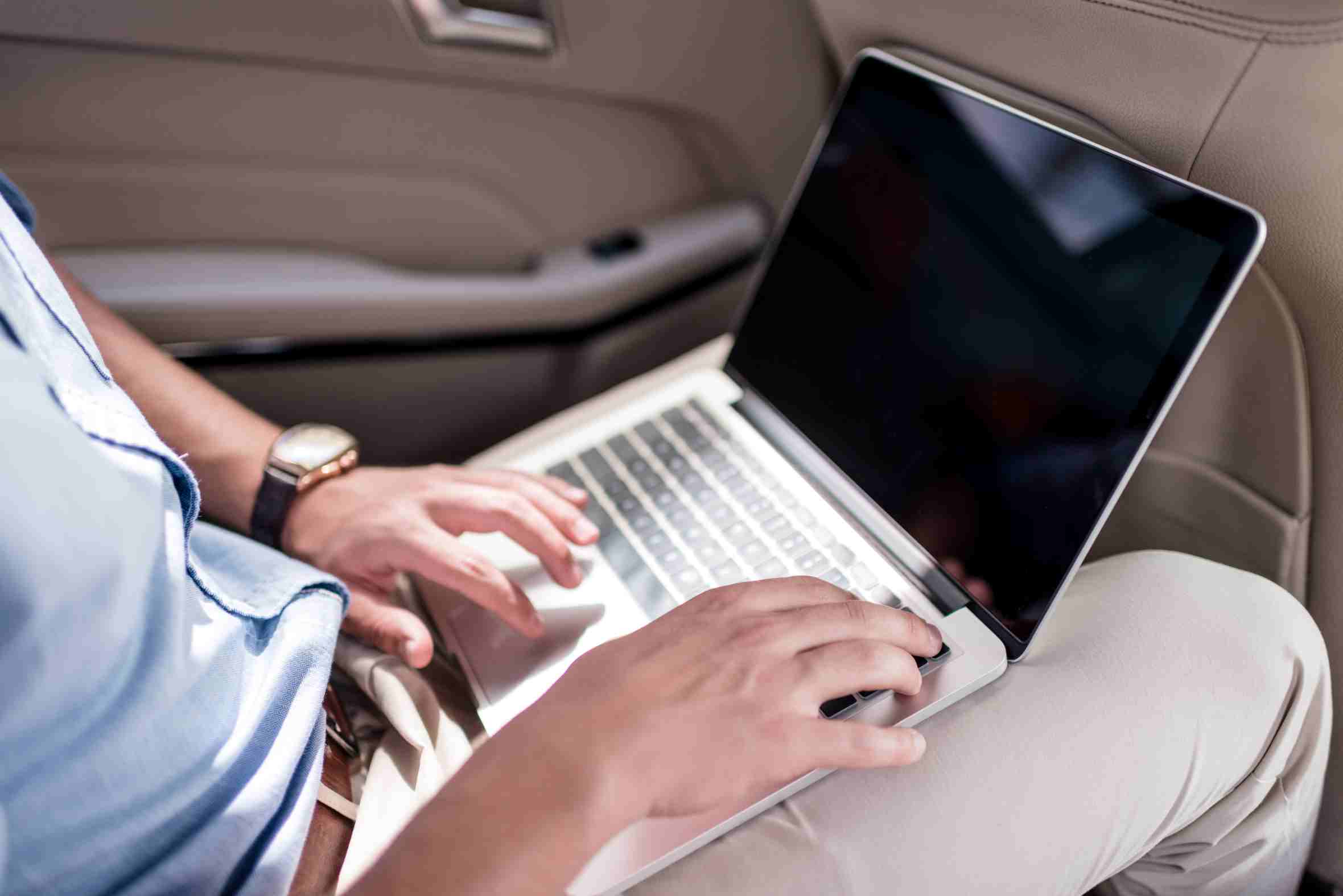9000+ Cashless Garages
1.2 Cr+ Policies Sold

9000+ Cashless Garages
1.2 Cr+ Policies Sold



Whether you're sending a last-minute email or binge-watching your favourite movies while on a road trip, there are many reasons why you may need to use your laptop in your car.
However, given the many applications we use on our systems, their batteries tend to drop after a while, requiring you to look for a way to charge them in the car.
Wondering how to charge a laptop in a car?
Keep scrolling for detailed insight!


Following are some of the best ways you can charge your laptop in a car:
You can also use a power bank to charge your laptop’s battery, just like you charge your smartphone. However, most laptops need a power output 40-45W, with power-hungry models needing 60W-100W.
Meanwhile, regular power banks provide only 20W. Thus, you need a power bank specifically made for charging laptops.
Listed below are the steps you can use to charge your laptop using a power bank:
Note: Check the power output requirements of your laptop before purchasing.
If you have a USB-C car charger with sufficient power output, you can easily use it to charge your laptop in your car. However, the laptop must have a USB-C charging port, or you need a USB-C to laptop charging adapter connector compatible with your device.
Follow the steps listed below to charge your laptop using a USB-C charger:
The charging should begin right away. In case it doesn’t, check the connections one more time.
You can also recharge your laptop in the car using its charger. However, laptop batteries need an Alternating Current (AC) source for charging, while the car battery generates Direct Current (DC). In this regard, you can use a car inverter charger to convert the DC power source to AC.
Here’s how you can do it:
If the charging does not start immediately, double-check all the ports.
Another effective way to charge your laptop in a car is via the cigarette lighter socket power outlet. To do so, you need to have a car laptop charger. It looks and operates like a standard laptop charger, except for a power jack. They are cost-effective and are available in both online and offline stores.
The steps to using it are as follows:
After the charging is complete, remove the car laptop charger from both ends.
Using an AC adapter, you can easily convert the car battery’s DC energy to AC and charge your laptop on the go. In this regard, there is no need for any additional cables other than your laptop’s charger.
Here’s how you can charge your laptop in the car using an AC adapter:
If the charging does not begin immediately, make sure that all the ports are properly attached.
You can also use a power tool battery to charge your laptop in a car. They are rechargeable and often come with USB adapters that can help charge your laptop without carrying additional cables. However, for this method to work, the power tool battery must have an output of 18V or 20V.
Here’s how you can use it:
If your laptop does not have a USB-C charging port, consider using a USB-C charger adapter connector for the laptop.
If you frequently travel outdoors with your vehicle, you can use a portable solar panel to charge your laptop. You can install it on the car’s hood, trunk, or roof and convert solar energy to usable energy for all your electronic devices.
To do so, follow the steps mentioned below:
Before we move on to how to charge a laptop in a car, some myths need to be clarified. Here they are:
Not if you use reputed third-party chargers that are compatible with your laptop.
Battery management systems and overcharging protection mechanisms help prevent the damage caused by prolonged charging.
Charging the battery to 100% does not kill it. However, consistent full charges can accelerate its degradation.
This was true for older nickel-based batteries. For modern lithium-ion batteries, this practice can accelerate their wear. Thus, it’s better not to let the battery percentage hit zero.
If you charge your laptop in the car using its battery when it is in motion, the car battery will not be drained. However, the battery will be drained if you charge your laptop when the car is stationary.
Moreover, charging your laptop overnight using the car battery while stationary will significantly drain the battery.
The best way to ensure that the car battery does not get drained in this regard is by charging only when the vehicle is in motion. In addition, you can follow the pointers mentioned below:
Install a deep-cycle battery if you wish to charge your laptop in a stationary car. Unlike regular car batteries, they charge back up quickly after being drained.
Here are some of the common issues and their solutions when you are considering charging your laptop in your car:
Always keep a USB-C cable and a USB-C to laptop charging adapter connector (if needed) in your car’s glove compartment.
USB-C cables' connectors wear out over time and usage. Periodically switching the cables and opting for high-quality ones can be effective.
Consider installing a USB-C car charger in your vehicle. Thus, if you forget to bring your laptop’s charger, you can charge your device using a USB-C cable.
Consider keeping a portable laptop power bank in your bag or glove compartment. This way, you can easily charge your laptop without depending on the car battery.
Following is a checklist that you should keep in mind to charge your laptop hassle-free in your vehicle:
Now that you have a comprehensive idea of how to charge a laptop in a car, you can choose any methods mentioned earlier that best fit your use case. However, before you try them, consider doing a trial run.
This will help you ensure you have all the required accessories and facilitate a hassle-free experience when you need to charge your laptop in your vehicle.